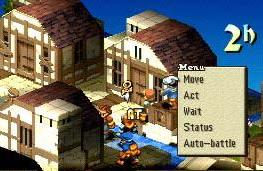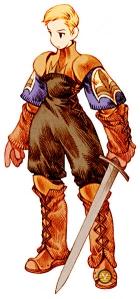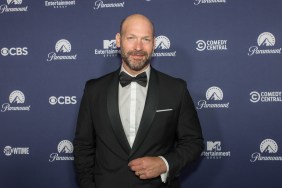Oh what a tangled story Square weaves…
Once known solely for their Final Fantasy role-playing games, Square Soft has been branching off into different game genres as of late and is proving to the gaming industry that they’re a force to be reckoned (i.e. Bushido Blade). The latest installment to the Square library is Final Fantasy Tactics, Square’s first stab into the strategy game market. A spin-off of the Final Fantasy games, FFT is testament to Square’s ability to create quality products regardless of genre.
In the tradition of Final Fantasy 7, FFT has the most confusing, convoluted, mind-numbing, so-called story that you’ll ever hear. You control Ramza Beoulve, a member of a noble family in the land of Ivalice who has witnessed the abduction of Princess Ovelia. The land of Ivalice has just recently seen the end of a 50 year war and the abduction of the Princess threatens to break the peace. The two families at conflict are the Galliones and the Zeltennia. This eventually breaks out into war and is known in history as “The Lion War.” With help from Delita Hyral, who is known to become hero of the war, you lead your team of Hotuken Knights into history.
Man, Jerry Springer don’t got nothin’ on this story. It may not sound bad, but I censored about two hundred other multi-syllable names from the story which has more turns in the first hour than the lines at Disneyland. Square really dredged up new depths of confusion when they came up with this one.
Gameplay in FFT is like most other turn-based strategy games. In any given turn you can move your character and perform an action; not necessarily in that order. The actions or can be one of hundreds of choices as your characters learn abilities such as dashing, throwing rocks, breaking weapons, casting spells, using items, turn-punching, or charging up for a big attack. These abilities are what make FFT a step above most other turn-based strategy games.
A system consisting of 19 different jobs sets the framework for character advancement in FFT. The jobs include monks, knights, wizards, dancers, geomancers, thieves, ninjas, and many others. At first your characters are lowly squires, but as they gain experience and job points they can change jobs and learn new abilities prescribed under each job. Whenever you decide to change their careers they still retain their old job skills. After gaining a certain number of job points you can spend them on learning new skills. These abilities are what you use in battle and have numerous interesting and powerful effects. This is plays a huge role in the strategy of FFT.

On the world map you can only move to pre-destined locations, which makes the story line extremely linear. When you visit towns you can visit the store, bar, or recruitment office. But everything is menu driven, so the only time you ever walk around is on the world map and during battles. This means that about 90% of the game is spent either shuffling through menus or fighting battles.
Hopwever, the battles in FFT are really what the whole game is about. They are fought on a rectangular battlefield consisting of basic polygons and can be seen in different angles by rotating the point of view. The maps are well done and consist of multi-leveled terrain to provide interesting tactical situations. At the beginning of a battle you choose your team’s formation and then find out your objective; which is usually “defeat all enemies.” Turns are played out similarly to Final Fantasy 7. Each character has a meter that must be charged until they can move, and the fastest characters move first. Back to the terrain; it really does play a big part in the game. Characters who stand on higher ground hurt more and have a better chance of hitting their targets. You’ll see that it’s a good idea to put your archers up high. Characters will also move slower when travelling through water and when going uphill.
For some strange reason Square reverted back to primitive sprite-based characters in FFT and because of this the game looks a little dated. I don’t really understand why they did this because everyone knows the Playstation can handle polygons, and they wouldn’t have to worry about slowdown because FFT is naturally slow. Let’s just say that the graphics in this game could easily have been done on the Super NES; everything except for the nice full-motion video that is.
The music in FFT is your basic Square Soft role-playing stuff. Nothing struck me as especially inspiring; but some of it did strike me as especially irritating. There’s this one song that is so in-your-face loud and over-excited that it’ll make your heart skip a beat when you first hear it. Or maybe it’s just me.
Being a newcomer to anything but role-playing games, Square Soft shows some of its inexperience in FFT. There are kinks in the game that prevent FFT from achieving its full potential and that irritate players like myself. For one, you can’t stand on dead bodies! Yeah, I know it’s disrespectful and all, but this is war! You should be able to pick up all the dead bodies, make a big ol’ tower, and stand on them for a height advantage. A lot of the time you won’t be able to corner an enemy or save one of your comrades because dead bodies are strewn all around and you can’t stand in a suitable square for an attack.
Another problem is with actions that require charging, such as magic and arrow attacks; you are forced to choose a target and then wait a few turns for the effect to be dealt. By the time you actually get your action off, the target has run ten laps around you, chopped off your head, and one of your allies has stepped into the spot where you targeted, so they get the brunt of the attack. There should have been some sort of auto-tracking system that would prevent this sort of snafu. Some other small complaints are: that you can only put five of your people on the battlefield (not including guests that join you), the enemy and guest-player turns should have been sped up so that the battles wouldn’t take twenty minutes a pop, and the camera should have been more versatile, because you still have really bad angles sometimes. Square should’ve also made a list of what all the abilities do, because then you wouldn’t have to waste time test-driving them.
Yes, there are a lot of small problems with FFT, but it’s still a pretty good first try. None of the problems are so hideous as to ruin the whole game. FFT is definitely for patient and strategy-wise gamers who can appreciate the subtleties of the genre. I usually prefer the speed of real-time strategy, but FFT has made me go both ways (you know what I mean). Whatever way you like it, give FFT a try; there’s nothing wrong with experimenting (okay, I’ll stop now).
-
+ Great Depth, Strategy
-
+ Almost as long as FF7
-
- Super NES graphics!
-
- Need PhD to understand story
-
- Some rough spots










